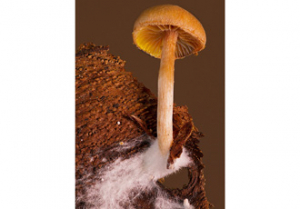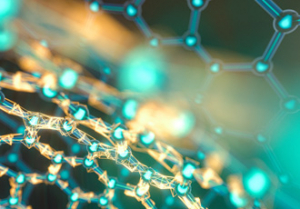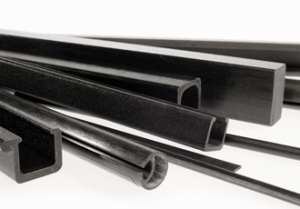Manufacturers may be missing out on Austempering and Martempering
Commonly defined as the controlled heating and cooling of metals to change their microstructure and mechanical characteristics, such as hardness, ductility, tensile strength and impact resistance, heat treatment is a core phase in many manufacturing processes. It enables engineers to vary the properties of a given material to optimise its design performance and ensure consistent, reliable results. In this country, the top heat treatment technologies tend to be standard hardening, tempering, carburising, induction hardening and annealing processes, whereas in the States, where the industry is valued in excess of $20 billion, isothermal treatments like Austempering and, to a lesser extent, Martempering are much higher on the agenda. So are British design engineers and manufacturers losing out by not embracing these technologies?
Heat treatment and metallurgy experts Keighley Laboratories of West Yorkshire offer Austempering of steel and ductile iron, as well as case and through hardening of steel components using Martempering, which is typically followed by a separate, conventional tempering operation. Both are fully predictable, interrupted quenching processes and the company suggests they offer manufacturers cost-saving opportunities for varying the alloy content of metals; in the case of austempered ductile iron (ADI), it enables replacing raw materials like aluminium, reducing the section size of castings, even radically revising component design.
Underlining that these are long-established, well-proven techniques, Keighley Labs has offered both specialised processes since the late 70’s, early 80’s, and helped pioneer the application of ADI in this country, for such components as excavator backhoe attachments and jackhammer mouldings. Particularly in the US, Scandinavia and Germany, ADI has become an accepted alternative for steel or aluminium forgings and castings for heavy truck components, construction and mining parts, railroad track plates, agricultural plough points and lifting arms, rifle parts and automotive gears, crankshafts and piston rings. Meantime, Martempering is used for hardening steel gears and gear trains, lawnmower blades, chainsaw guide bars, high alloy valve plates, hand tools, drive shafts and bearing assemblies.
Both Martempering and Austempering are designed to overcome the technical limitations of conventional quenching and tempering, particularly with regard to the development of micro cracks, distortion and dimensional changes. In conventional processes, the metal is heated to an austenitic state, then quenched in oil or water to produce a crystalline structure called martensite; however, the steep cooling gradient can mean that the surface of the component reaches martensite transformation before the core.
By controlling cooling severity using interrupted quenching in a bath of molten salt, both Austempering and Martempering allow sufficient time for the surface and core to cool at the same rate, resulting in more uniform transformation and a stronger microstructure.
Typically performed on carbon and alloy steel stampings, small steel springs and pressings, powdered metal parts and ductile iron castings, Austempering produces bainite in steel and ausferrite in iron, which usually do not require final tempering. It improves the material’s ductility and toughness, produces higher impact and fatigue strength, and increases wear resistance, as well as reducing cracking and minimising distortion, lessening the need for subsequent machining.
In ADI specifically, it utilises a material that is 10% lighter than steel and produces mechanical properties superior to cast and forged aluminium, higher noise-damping qualities than steel and unique work-hardening properties. This provides opportunities for cutting component costs by using less raw material and for casting components near to finished shape, with a surface highly receptive to painting and plating.
A treatment for through and case hardening of alloy-containing steel and certain carbon steels, Martempering is similar to Austempering except that the parts are slowly cooled through the martensite transformation, without developing the associated high residual stresses. Martempered components are usually then tempered to convert them into a more ductile material, which is why the less misleading name ‘marquenching‘ is often used. Whatever the term, this process prevents cracking and substantially reduces component distortion, which also makes it ideal for treating thin or complex parts that are not suitable for press quenching.
Keighley Laboratories carries out Austempering and Martempering in a computer-controlled salt bath furnace, containing liquid nitrate salt, with quick ramp-up and heating uniformity to ±3˚C ensuring optimum processing results and consistent metallurgical properties. It can quench single or multiple components up to ½ tonne at a time, with Martempering typically carried out at temperatures up to 260˚C and Austempering up to 400˚C. Martempering soaking times tend to be shorter, usually between 20 and 30 minutes, whereas Austempered parts can be soaked for 1, 2, 3 even 4 hours or more, to achieve the required bainitic or ausferritic structure. The company also offers a Carbo-Austempering process for developing a tough, high-carbon bainite case on steel components, demanding exceptional tensile strength and toughness.
Keighley Labs’ technicians can design processing routes for specific components and materials, assist with the chemical analysis of components and, where necessary, help revise material specifications and select appropriate heat treatments to achieve the desired properties. They also have an in-depth understanding of TTT (time, temperature, transformation) diagrams, to determine when transformations begin and end for an individual isothermal heat treatment. The company operates a certificated Quality Management System that complies with BS EN 9100, ISO 9001 and EN 9104 for the heat treating of metals, including Austempering and Martempering, for a wide range of industries that takes in the aerospace sector.
Similar articles
More from Keithley Instruments GmbH
- Manufacturers may be missing out on Austempering and Martempering 14th November 2011
- Keithley to Show Award-Winning Innovations in RF/Wireless Test at EuMW 15th September 2009
- Free Keithley Webinar Explores MIMO Channel Sounding in RF Testing Using Channel Emulation 9th September 2009
- Keithley Expands Range of DC Source-Measure Instruments Compatible with ACS Basic Edition Software 27th August 2009












Write a comment
No comments